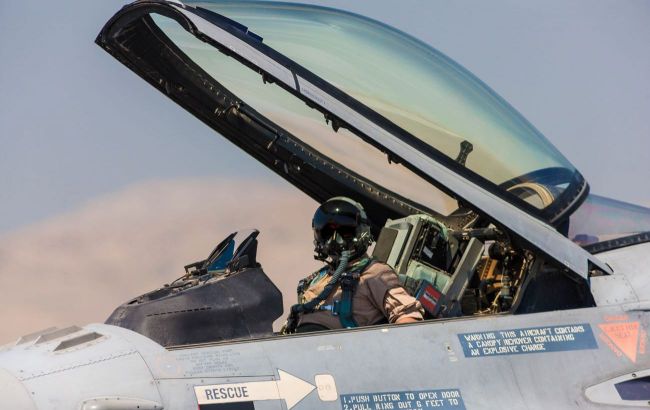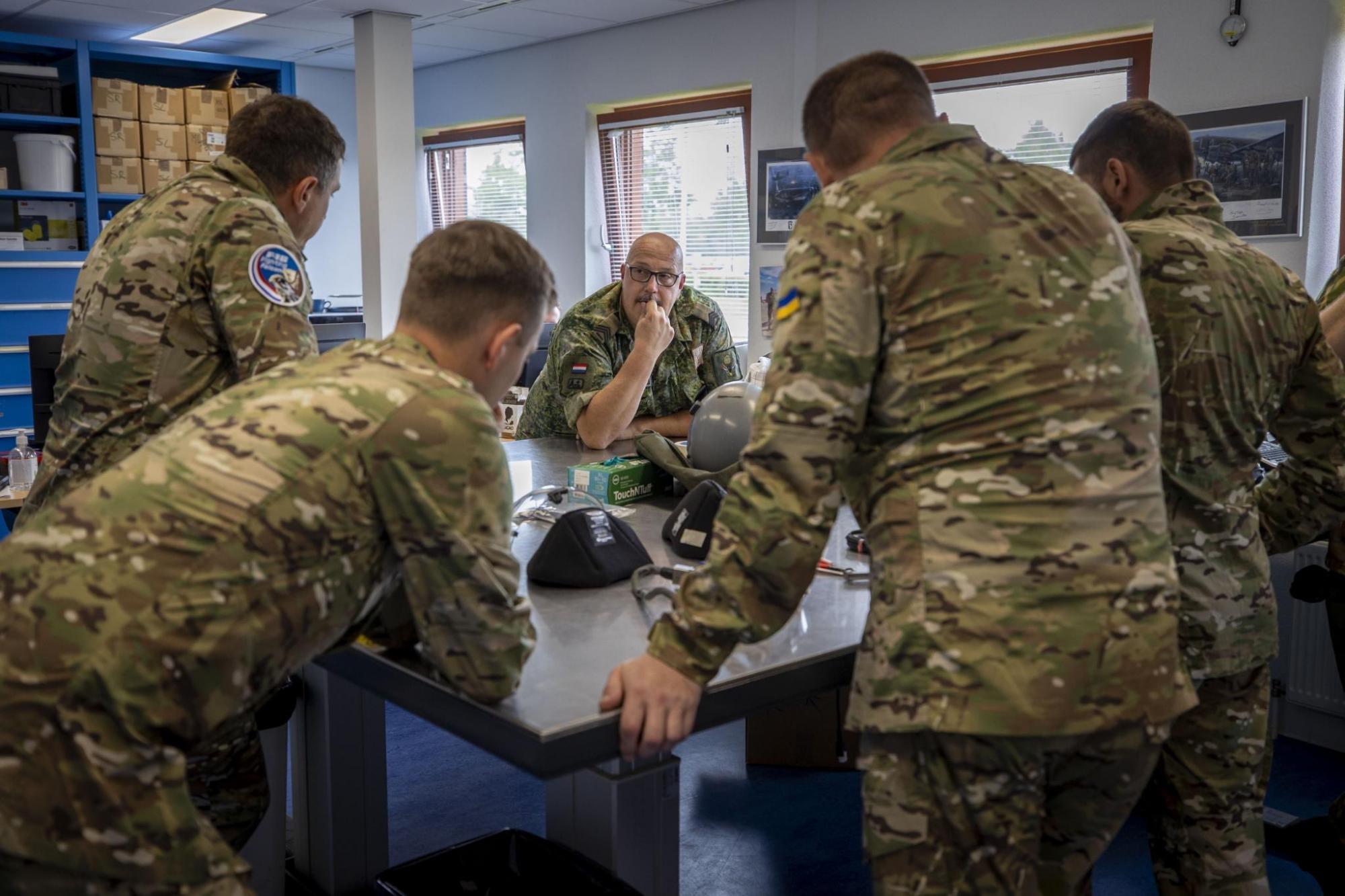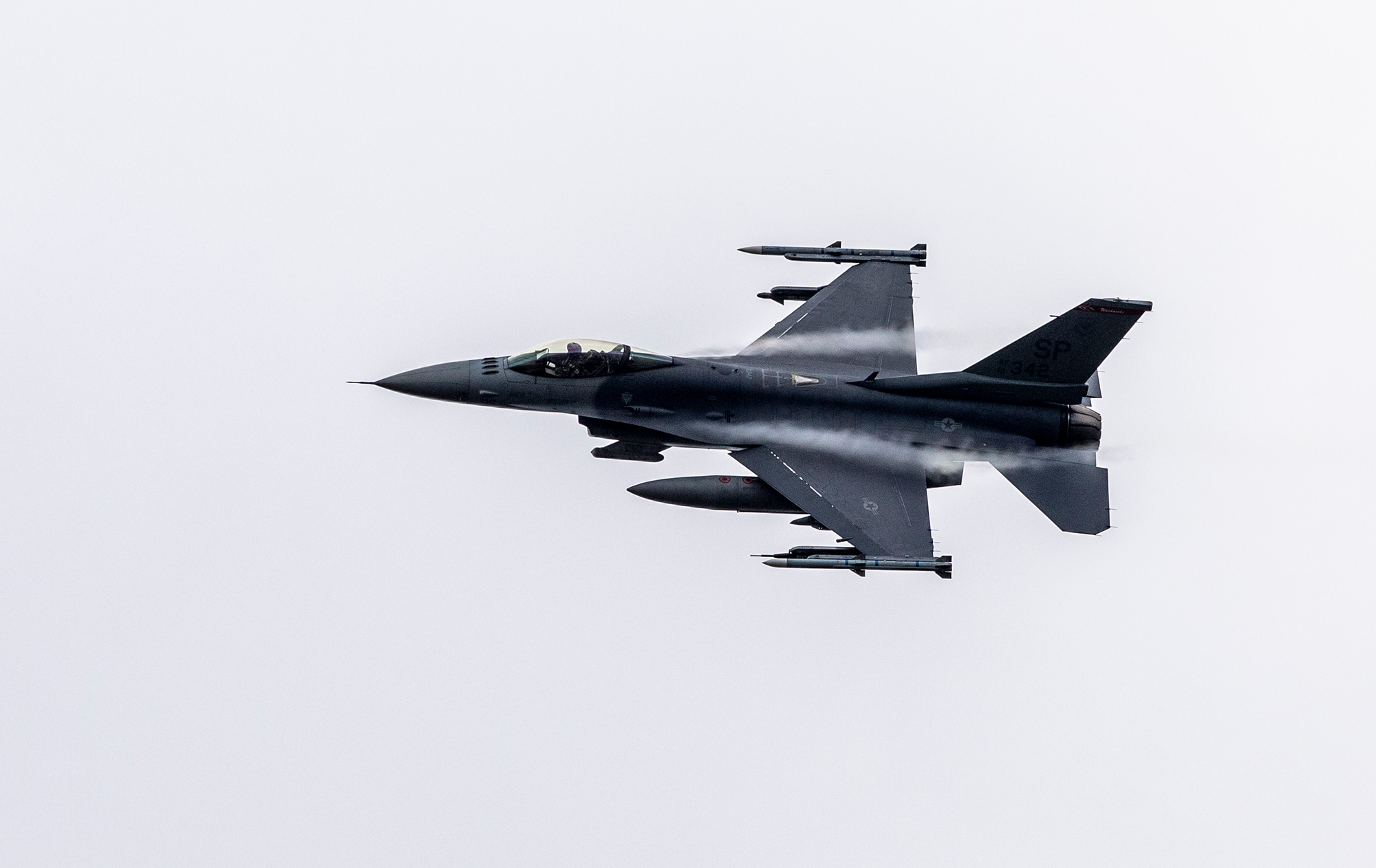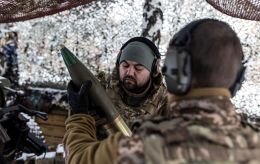F-16s on the way: When Ukraine will receive fighter jets and see their effect at the frontline
 The first F-16s are expected to appear in Ukrainian skies by the end of the summer (Getty Images)
The first F-16s are expected to appear in Ukrainian skies by the end of the summer (Getty Images)
Ukraine will receive F-16 fighter jets in the coming weeks or months. There are already beliefs that aircraft deployment will be limited and no closer than 40 kilometers from the frontline.
RBC-Ukraine explains how quickly the F-16s will appear, what tasks they will perform in the first stages, and when they will bring tangible effects to the battlefield.
Contents
- When F-16s will arrive in Ukraine
- How many aircraft will be in 2024
- How to ensure a 'maneuver by force' with the help of Poland and Romania
- How F-16s will be used in the first stages
- When the effect of F-16s will be tangible
When F-16s will arrive in Ukraine
Deliveries of F-16 fighters are tied to the training of Ukrainian pilots and technicians. At least one group is in the final stages of training, practicing night flights and, according to the Air Force, “has accumulated the required number of hours.” A group of technicians has returned to Ukraine from Denmark and is preparing to receive F-16s at air bases. Another 50 are expected to join the training soon.
The officials announced different timing of the transfer of the aircraft. According to the latest information, the first units should be on combat duty by the end of the summer. At least that's what officials say.
Two weeks ago, US Secretary of State Antony Blinken said on the sidelines of the NATO summit that the process of transferring F-16s from Denmark and the Netherlands had begun. In a joint statement, the two sides confirmed that the jets would appear in Ukrainian airspace in the summer. Ukraine's Foreign Minister Dmytro Kuleba clarified that the matter of the first wave delivery had been resolved, and they were working to increase the number of F-16s and transfer other aircraft.
A week later, Dutch Defense Minister Ruben Brekelmans said that the partners were working hard to make this happen as soon as possible. “I can say that the F-16s will arrive in the near future. But I will not share any details,” he said.
It is not clear whether the Western-style aircraft will arrive in July or August. But recently, President Volodymyr Zelenskyy added to the intrigue. According to him, the Polish government has made a decision that will speed up the process. Most likely, it is about logistics and transportation from NATO countries.

Training of Ukrainian technicians for F-16 maintenance (photo x.com/Jvd_Tweet)
Experts interviewed by RBC-Ukraine are cautious in their predictions.
“The issue is multifaceted, and the situation is not entirely dependent on Western allies. Much depends on us - when we will be ready to accept the planes, service them, and ensure their safety,” explains Valerii Romanenko, a leading researcher at National Aviation University.
Speaking of the timing, former Antonov Design Bureau test engineer Kostiantyn Kryvolap suggests starting from the data on pilot training. According to reports, 8 people will complete their training in Denmark in August, and 12 more in September at the US base in Arizona.
“As I understand it, the transfer of aircraft is one process, and the beginning of their use is quite another. In my opinion, if the pilots complete their training in August and September, it is unrealistic to expect the F-16s to be available before October. Because the planes will be ready when everything works together: pilots, technicians, infrastructure, and coordination with other troops. I don't think we will see them in action until October-November,” he said.
How many aircraft will be in 2024
Ukraine needs at least 128 F-16 multi-role fighters to effectively counter Russian aircraft. To date, partners have declared their intention to provide about 80:
- Denmark - 19 aircraft
- Netherlands - 24 aircraft
- Belgium - 30 aircraft
- Norway - 6 aircraft
The delivery of the promised aircraft will take time. According to President Zelenskyy, there is a “decision on 10-20 fighters.” Bloomberg reports citing sources, that Ukraine expects to receive 6 units by the end of the summer and 20 in total by the end of the year.
According to Kryvolap, the first 20 pilots will be able to operate a standard squadron of 12 units.
“I think this year we will receive aircraft in a 6+6 configuration. It is possible to have up to 18 aircraft, but this means a very heavy workload. The pilots will have to lift the fighters during air attacks and land them at another airfield. Therefore, based on the number of pilots, I am still inclined to 12 aircraft,” the expert said.

Volodymyr Zelenskyy inspects the F-16 in Denmark, August 2023 (photo by presiden.gov.ua)
Further deliveries and quantities are also linked to the training of flight personnel. At least for now, the situation is not very clear. On the one hand, a training base has been opened in Romania, simulators are being delivered there, and the Netherlands is providing aircraft for training, but the center has not yet become fully operational.
“It takes at least six months to train. If pilots without combat experience are sent there, it can last at least 9 months,” added Kryvolap.
How to ensure a 'maneuver by force' with the help of Poland and Romania
In a recent interview, Serhii Holubtsov, Chief of Aviation of the Air Force Command, revealed some of the nuances of the F-16. For example, not all the aircraft will appear in Ukraine at once. Some of them will remain in training centers abroad. They will serve as a reserve to replace faulty aircraft.
The fact that Romania and Poland are ready to assist in many areas is a good option, says Valerii Romanenko.
“Romania has a training center, and Poland may be preparing a depot to store the aircraft that will be transferred to us. Then they will only need to fly across the border, land at any airfield, and no one will say that they are operating from NATO air bases,” the expert explains.
Hence, it will be possible to repair and redeploy F-16s not from Denmark, the Netherlands, Belgium, and Norway, but from neighboring countries, where they will be accumulated combat-ready.
“In this case, we have a so-called maneuver by force. For example, if the Russians get itchy in a certain area of the front, more fighter jets fly to our territory. Or if it's bad weather in winter or relatively calm at the front, they fly in for repairs. But I emphasize that this is my personal opinion,” the source added.
_1.jpg)
Some of the F-16s for Ukraine will be based abroad (photo by Getty Images)
According to him, it looks like Ukraine will have one base and several operational airfields for F-16s. But how they will be used directly depends not only on the number but also on the equipment and weapons transferred.
Almost certainly, only air-to-air missiles for close combat and anti-radar AGM-88 HARM will be available at first. In this scenario, there is no hope for a quick arrival at the front, because there will be nothing to hit ground targets with. According to the latest signals, the first F-16s will definitely not be involved in frontline operations.
How F-16s will be used in the first stages
The phased deployment of the F-16 means that the range of combat missions will be expanded gradually. Last year, the American Defense News presented the most realistic scenario.
At the first stage, combat aircraft will be involved in air defense: to intercept Russian drones and missiles. Missions in the rear areas will allow pilots to gain combat experience outside the range of enemy fighters and ground-based air defense systems.
According to Kryvolap, the goal is not to train pilots to shoot down drones and missiles but to work out the system of air support and interaction with other branches of the military.
“How are our flights organized? The tower gives the command - course, guidance, and altitude - and the pilot executes it. The F-16 and other NATO aircraft operate differently, the pilot is more independent. Therefore, it is rather necessary to work on communication rather than train pilots to chase the Shahed," he said.
Besides, intercepting cruise missiles and Shahed drones is one of the simplest missions that F-16s can perform.
“It is reasonable, logical, and correct. If they are immediately sent against Russian Su-35s, I don't know how it can end. It is still unknown what kind of missiles, radars, and equipment they will have and whether they will allow for air combat,” the expert noted.
In the second stage, the F-16 will be gradually involved in operations at the front. For example, to launch AGM-88 HARM missiles against enemy anti-aircraft missile systems. Provided that the onboard equipment will allow for additional missile guidance.
“We are currently launching HARM from MiG-29s, using missiles at 15-20% of their capabilities. The principle is as follows: the SAM radar works, we receive a signal and launch a missile in its direction. But radars can switch frequencies, and the missile will fall 50 meters away without homing,” Romanenko explains.
When the effect of F-16s will be tangible
If Ukrainian aviation is able to weaken Russian air defense, it may be able to move on to full-fledged operations at the front. This is also because the Russians will have to use some of their aircraft for air defense, which will reduce the number of strikes. However, it will only be possible to drive the carriers of the guided bombs away from the frontline after the deployment of more F-16s.
In a recent interview with The Guardian, Ukrainian Armed Forces chief Oleksandr Syrskyi spoke about a similar scenario. According to him, the F-16s will help shoot down missiles more effectively and hit ground targets more accurately, but he clarified that the fighters would not approach the frontline closer than 40 kilometers.

Ukraine will not achieve air parity with Russia even with the first F-16s (photo by Getty Images)
Valerii Romanenko suggests that Syrskyi's statement could not have been without elements of disinformation.
“It seems to me that once or twice we will test F-16s on Russian guided bomb carriers or attack aircraft. It will be a kind of surprise. Like in May 2023, when Patriot was tested on aircraft and helicopters over the Bryansk region. But this is just my guess. I do not rule out a sudden cavalry attack. But after that, for a month or two, the F-16s will be exclusively chasing missiles and Shaheds, as the Russians will throw all their efforts into hunting them down,” he said.
According to Serhii Holubtsov, Chief of Aviation of the Air Force Command, to succeed on the battlefield, it is necessary to achieve air superiority or at least parity. It is difficult to do this with aircraft alone, as a whole complex is needed, from electronic warfare and long-range radar detection ASC 890 (expected by the end of the year) to long-range air defense systems such as Patriot. As soon as all of them appear at the front, we can talk about a turning point and real prospects for driving away the carriers of the guided aerial bombs by 30-50 kilometers.
We also need to understand how Russian Su-35 or Su-30SM fighters will behave, emphasizes Kryvolap.
“Because their air-to-air missiles have a range of 250 kilometers. I think we need 3-4-5 F-16 squadrons to make a real difference at the front. And judging by the time we can get 60 planes and 120 pilots, it will not be soon,” the expert believes.
It is also not clear how effective F-16s are in air combat. Objectively, no one can say with 100% certainty whether they are stronger than the Russian Su-35, because the fighters have never met in combat before.
RBC-Ukraine's experts warn Ukrainians against high expectations. The appearance of Western aircraft may lead to a kind of stalemate. But even this moment will be positive, as the enemy will not be able to break through the defense and move forward.
“What are the Russians doing? They are launching dozens of GABs at the village, then storming the positions with 10 men, advancing a hundred meters a day, and this is the scale of the current offensive. If we manage to thin out the ranks of the GAB carriers, the enemy will have no tools left for offensive operations. It will be impossible to concentrate tanks, break through the front, and deploy mechanized units. All equipment will be destroyed in the shortest possible time,” Romanenko summarized.
Can airplanes become a game changer? To a certain extent, yes. When will this happen? It's hard to say. Can F-16s win a war? No. But with sufficient numbers and good equipment, they will certainly increase the likelihood of Ukraine's success.
Sources: statements by representatives of the Ukrainian Air Force, President Volodymyr Zelenskyy, Western officials, an interview with the Commander-in-Chief of the Armed Forces of Ukraine Oleksandr Syrskyi for The Guardian, and comments by aviation experts Valerii Romanenko and Kostiantyn Kryvolap.

